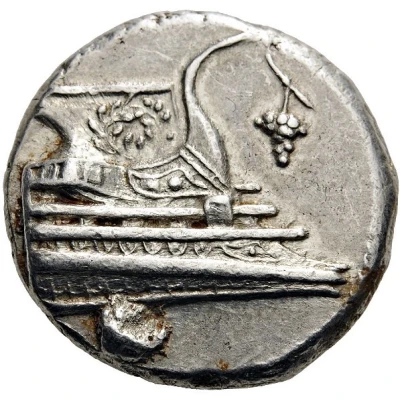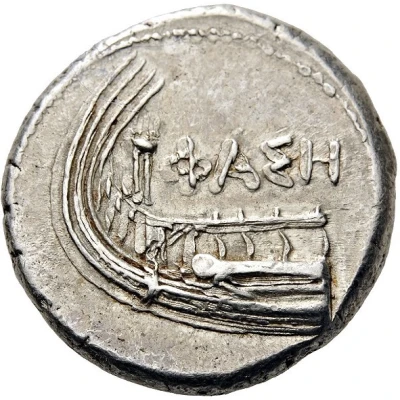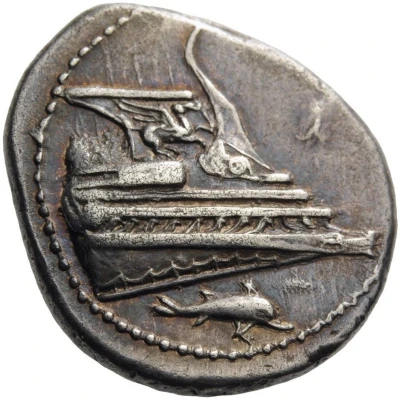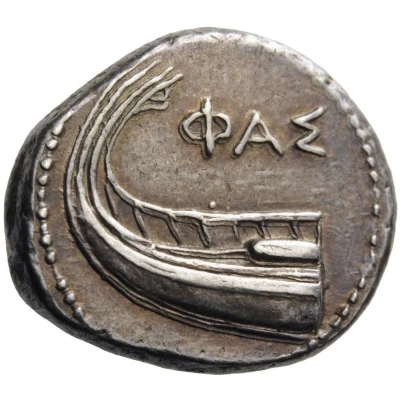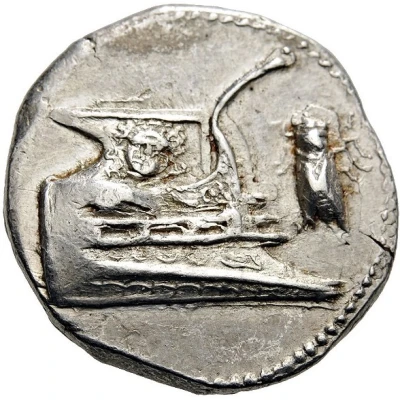
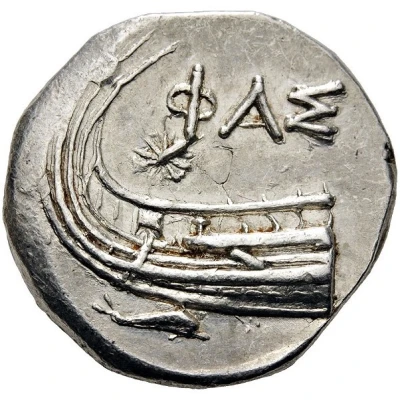

© Nomos AG
Stater 400 BC - 300 BC
| Silver | 10.32 g | 22.0 mm |
| Issuer | Phaselis (Lycia) |
|---|---|
| Type | Standard circulation coin |
| Years | 400 BC - 300 BC |
| Value | Silver Stater (3) |
| Currency | Drachm |
| Composition | Silver |
| Weight | 10.32 g |
| Diameter | 22.0 mm |
| Shape | Round (irregular) |
| Technique | Hammered |
| Demonetized | Yes |
| Updated | 2024-10-10 |
| Numista | N#192853 |
|---|---|
| Rarity index | 97% |
Reverse
Stern of galley left. ΦAΣ above and below, dolphin
Script: Greek
Lettering: ΦAΣ
Interesting fact
The Phaselis Stater coin was used as a form of currency in the ancient city of Phaselis, which was located in the region of Lycia (present-day Turkey). The coin features an image of a lion's head on one side and an inscription on the other side that reads "ΦΑΣΕΛΙΤΩΝ" (Phaseliton), indicating its origin and the authority that issued it. It's interesting to note that the Phaselis Stater was used as a standardized form of currency across the ancient Greek world, and its design and weight were based on the Athenian silver standard, which was widely used in the 5th and 4th centuries BC. This coin's existence and use in trade and commerce during that time period speaks to the extensive trade networks and economic systems that existed in the ancient world.
